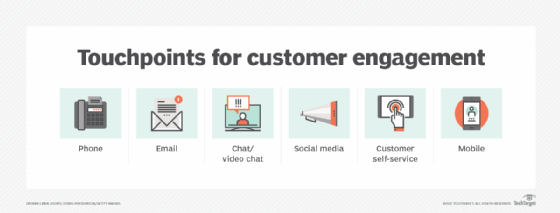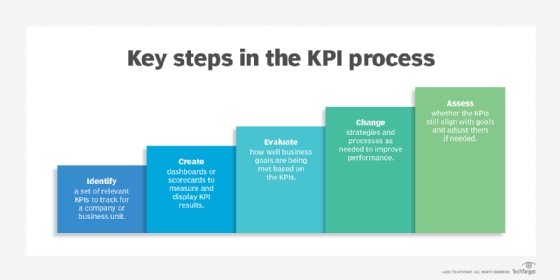A guide to account-based engagement
Account-based marketing strategies can unify marketing, sales and customer service objectives to prioritize, personalize and monetize engagements with high-value accounts.
Customer relationships have encountered major challenges during the past few years due to social and economic events that have disrupted lifestyles of consumers and business operations of enterprises. A strategically targeted and personalized account-based marketing approach to engaging customers and rebuilding those relationships is now required to maximize and monetize client interactions.
What is account-based engagement?
Account-based engagement (ABE) is about quality, not quantity. As an adjunct to an account-based marketing (ABM) strategy, ABE is the alternative to the traditional mass marketing of lead-based approaches. Rather than spreading the marketing message in hopes of hitting the right customers, ABE uses advanced technologies, analysis, collaboration and personalization to focus on high-value accounts and deliver the perfect message at the perfect time to customers on the channel of their choice. These accounts have been preselected and essentially prequalified.
The goal is to engage with a defined set of target accounts, create personalized marketing campaigns that attain and retain customers, build strong relationships along the customer journey and ultimately improve revenue and ROI.
We're living in an era of hybridization -- hybrid cars, hybrid cloud, hybrid workforces and hybrid engagements in which businesses interact with B2B customers digitally and physically. Digital engagement entails online interactions via websites, emails, content, surveys and newsletters, while physical engagement encompasses the old-fashioned meet-and-greet method of personal visits, phone calls, texting, attending conferences and visiting show booths to view product demonstrations.
ABE vs. ABM: What's the difference?
For ABM and ABE to work effectively, B2B marketing, sales and customer service teams must align continuously to prioritize and target accounts. ABM, the more broad-based approach to marketing, and ABE, the more strategic and tactical approach to engage target customers in high-quality conversation, should complement each other.
But ABM has been easier said than done. Businesses are implementing ABM inconsistently and failing to achieve anticipated goals, partly because the strategy is weighted toward marketing to the detriment of sales and customer service. That's where ABE comes in. ABE better aligns the so-called three pillars of successful customer relationships, placing sales and customer service on equal footing with marketing.

How to create an account-based engagement strategy
At the outset of an ABM engagement program, all three pillars must work as a team and agree on shared goals -- prioritizing, maximizing and monetizing target accounts -- even though each group will inherently go about achieving those goals differently.
1. Find and create more opportunities in target accounts
To better monetize target accounts, B2B marketers and sales development representatives (SDRs) must first focus on creating more opportunities in each account through better sourcing of sales intelligence capabilities and collected customer data. SDRs specialize in outreach, prospecting and qualifying leads, and they typically interact with potential customers at the beginnings of customer journeys. They must understand the available buying centers and the accounts within them, using the ABM tools, techniques and insights to prioritize, analyze and determine the kind of sales potential that initially placed these accounts high on the priority list.
When target accounts aren't part of the buying process, sales teams need to build relationships with these high-value customers through engagement, increasing the likelihood that they will reach out to the company proactively. It's also important to know the background of individual contacts, leads and website visitors and where they work. Today's ABM tools make it easy to map leads and web traffic to their respective accounts, opening the door to more sales opportunities.
2. Move past a leads-based approach
Above all, it's important to recognize that only a small percentage of a company's customers comprise most of the sales revenue. Applying the old 80/20 rule to marketing, sales and customer service may be simplistic but does illustrate why account-based engagement makes sense. A standard marketing qualified lead typically can't deliver the desired impact and may even be useless. It doesn't provide the breadth of buying information necessary to close a sale when compared to the wealth of data that a targeted group of high-value clients can provide. An ABM engagement program can improve the customer buying experience, shorten the sales cycle and yield a better marketing ROI.
3. Reorient ABM selling around buying centers
By using technologies that provide insights into customer personas and buying patterns, marketing, sales and customer service teams can identify, prioritize and engage buying centers and better monitor client groups and individuals. Quality purchase intent data can provide the required level of insight into target accounts and illuminate the goals of front-line sales teams. Buying intent data collected from account buying centers can show purchase-relevant topics that enable marketing, sales and customer service teams to devise better engagement tactics.
4. Evolve account-based sales approaches with better insights
Even if sales teams are armed with actionable insights into account buying centers, sales teams still need help coalescing targeted accounts in a specific account group to build buying momentum. That may call for an additional proactive tactic to stimulate the sales process. Rather than taking a reactive approach to a prospect account inquiry, present a new goal that provides real value to the buying center. It then requires marketing, SDRs, account executives and management to collaborate and create the necessary processes, roles and responsibilities to achieve that goal.
5. Align marketing to sales to better engage more high-value accounts
When an ABM target account list is created, sales and marketing teams have agreed to engage those specific high-value accounts. If marketing teams launch into their own concept of ABM engagement without considering the needs of SDRs, their efforts may likely get short shrift from sales teams. Therefore, it's incumbent upon marketing teams to create the type of engagement with target accounts that lays the groundwork for sales activity.
6. Deliver better value to secure deeper engagement
Sales leads alone are not enough to deliver on the revenue objectives of an ABM program, and sales teams aren't equipped to drive better levels of customer engagement on their own. Therefore, marketing teams must take up the challenge of driving better engagement with high-value accounts. But if they simply graft a classic demand generation approach onto a target account list and call it "ABM," they could be shooting themselves in the foot.
Classic demand generation tactics simply aren't designed for deeper engagement. And since those tactics cater to broad-based lead volumes, emphasis is placed on aggregate yields rather than performance within specific high-value accounts -- the exact opposite of an ABM strategy. Marketing teams need to identify which tactics can actually drive deeper account engagement over time.
7. Identify and pursue target account entry points
As marketing teams improve their engagements with target ABM accounts, SDRs must capitalize on that progress. SDRs may need training to develop new ways of building momentum and to create guardrails that prevent them from ignoring -- or, worse -- reversing the engagement inroads they made. Key performance indicators (KPIs) should be adjusted accordingly. SDRs should receive guidance on how to nurture individual accounts instead of disqualifying whole accounts based on an uninspiring interaction with one customer.
According to a recent survey of SDRs, most companies reported that their teams achieved less than 70% of their quota and only 17% of them achieved greater than 90%. Contributing to these less-than-stellar results are broken or unclear reporting structures, misaligned performance metrics and business goals, and time-consuming list creation processes. Without addressing these issues, SDRs can be a roadblock to an ABM engagement program's success.
8. Use real intent data to drive higher quality SDR interactions
Along with closing the major gaps in sales development infrastructure, enablement and processes, it's important to know how SDRs interact with accounts by phone, email, texting and chat. These frontline sales teams have a very limited window to make a positive impression with customers but plenty of room to make a bad impression. To increase high-quality ABM engagements and cut down on negative ones, SDRs need access to prescriptive sales intelligence and the training necessary to monetize these insights.

How to track account-based engagement
Monitoring engagement levels can determine when it's time to deploy a high-touch marketing campaign and coordinate with sales teams on ways to take engagement to the next level. If tracking data, for example, shows little or no level of engagement from high-value accounts, it may be time to deploy awareness campaigns. Tracking and establishing engagement levels also helps determine conversion rates for accounts that do engage a company, product or service.
From there, ABM tools with predictive capabilities can create forecasts and play an influential role in ABE planning, not to mention proving a campaign's success to all stakeholders. Of course, successful engagement strategies will be different for each company, depending on the mutually agreed-upon goals, benchmarks and KPIs established among marketing, sales and customer service teams as well as their C-level managers.
KPIs to consider include the following engagement rates:
- Percentage of target accounts engaged in a specific moment in time.
- Percentage of unknown website visitors during a specific time period who could be high-value accounts.
- Number of high-value accounts converted to contracts over a given time period.
- Time to reach a successful engagement and convert accounts.
How to use account-based engagement data
Identifying target accounts basically boils down to knowing the background and personal buying habits of high-value clients -- where they work, where they spend their time and what their pain points are. It's also important to place that information in context with influential forces outside their control, including industry trends and economic and social factors.
Engagement data can play a critical role in refining collected information and helping marketing, sales and customer service teams dig deeper into customer behavior patterns and devise more personalized messages on specific channels. If data reflects no engagement activity among high-value accounts, for example, actions may include implementing an awareness campaign. If there are spikes in engagement levels among these accounts, insights into what caused those spikes can help ABM teams pinpoint those areas.
How ABM tools, techniques and services can help
Customer engagement can be a tricky and complex business. The only thing worse than a negative customer experience is no experience at all. In the era of big data, the cloud, AI and tech-savvy customers, ABM engagement tools, techniques, services and advanced technologies can analyze, prioritize, democratize, maximize and monetize vital account information that businesses collect daily.
With today's ABM technologies, enterprises can use that data to collaborate effectively among ABM team members, target high-value accounts, exploit the benefits of digital advertising, create social media campaigns, personalize content and messages, monitor and refine engagements, convert accounts and open new revenue streams.
Editor's note: TechTarget offers ABM and project intelligence data, tools and services.







